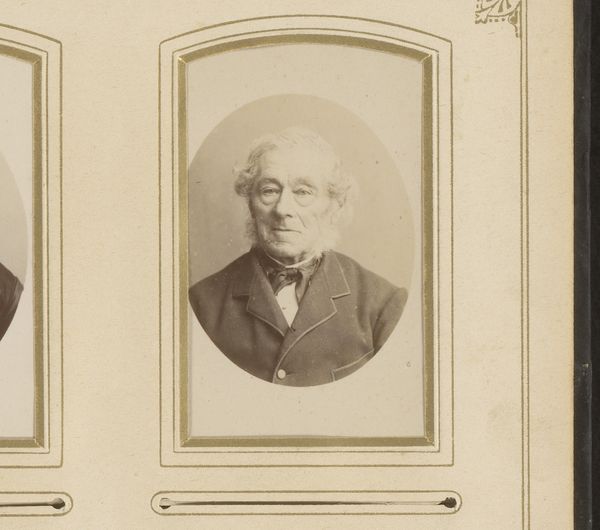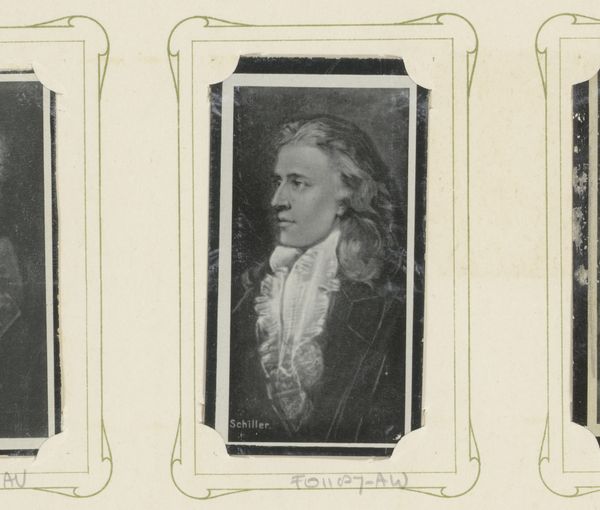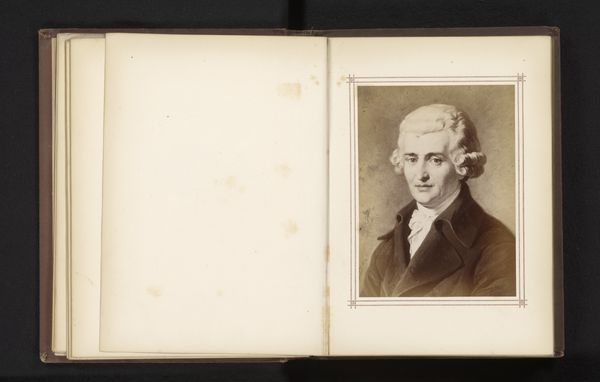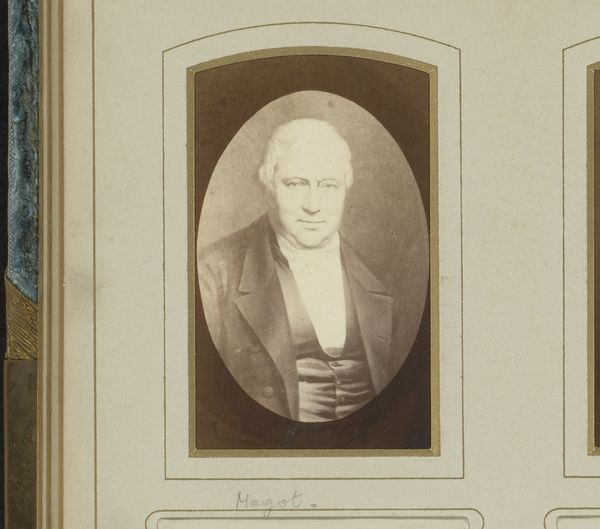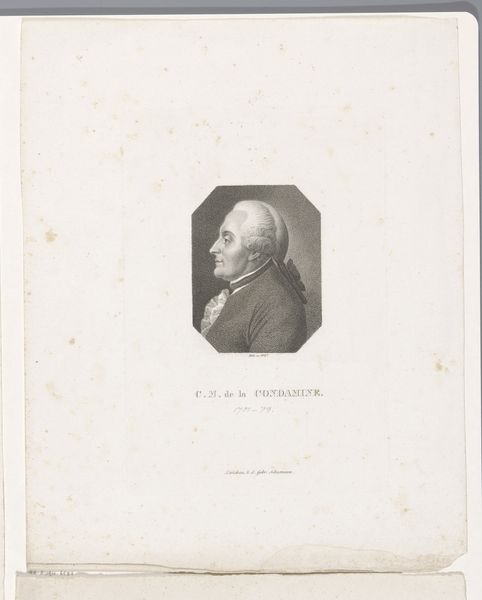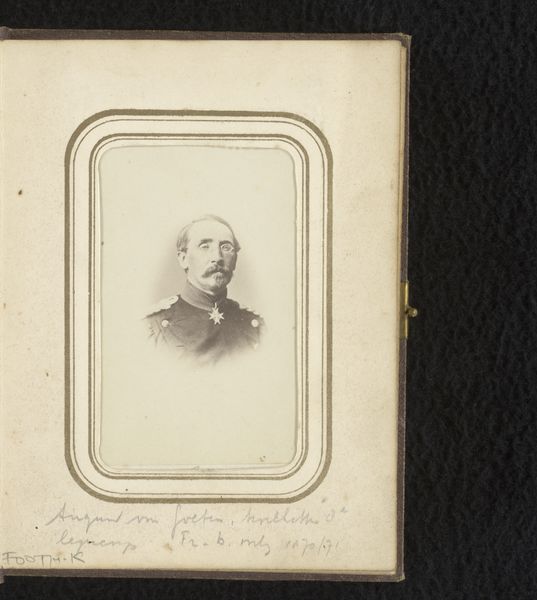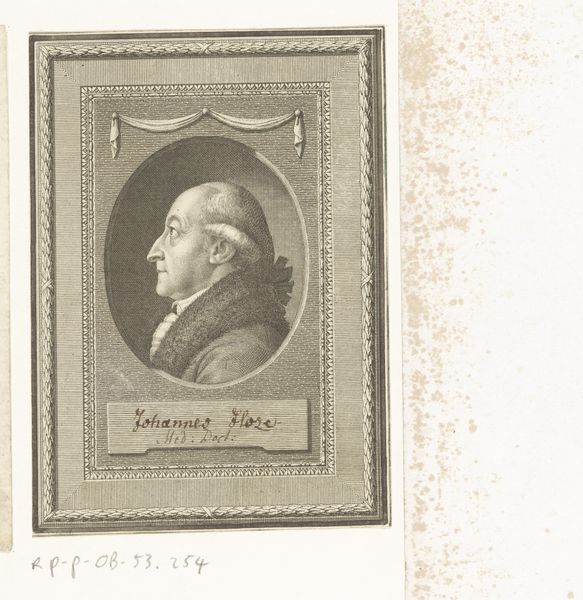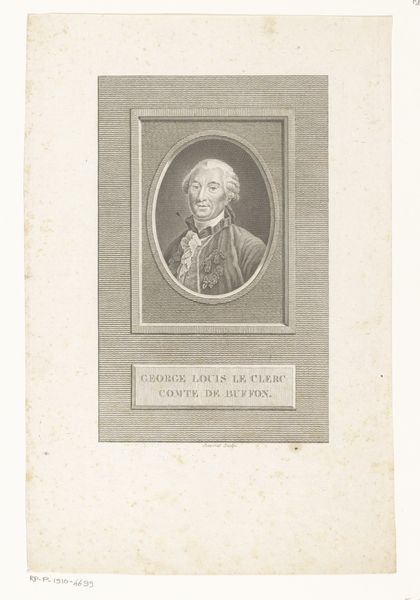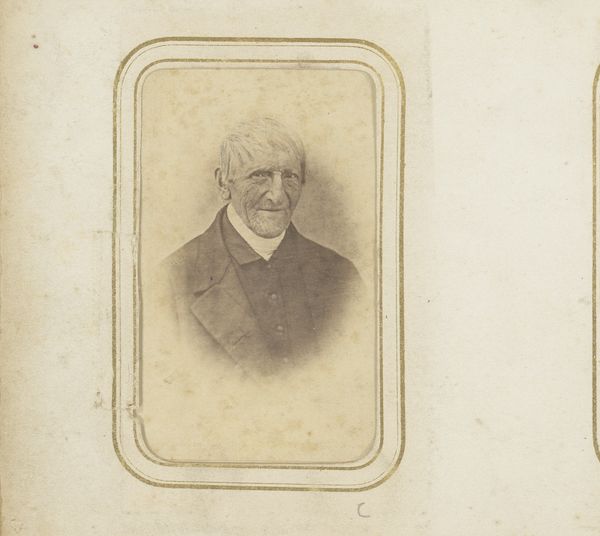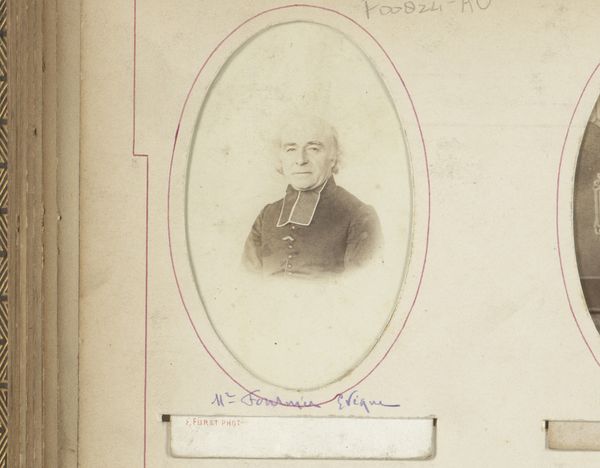
Reproductie van een geschilderd portret van Johann Wolfgang von Goethe 1905 - 1906
0:00
0:00
print, etching, photography
#
portrait
# print
#
etching
#
photography
#
realism
Dimensions: height 82 mm, width 45 mm
Copyright: Rijks Museum: Open Domain
Editor: This is a reproduction of a painted portrait of Johann Wolfgang von Goethe, made sometime between 1905 and 1906. It seems to be a print, maybe an etching or a photograph. I'm struck by the formality of the pose and the framing around the image; it really evokes a sense of historical reverence. What cultural associations jump out at you when you look at this? Curator: It's fascinating how a reproduction can carry as much cultural weight as an original. Consider Goethe – an icon of German Romanticism. This image, re-circulated at the turn of the 20th century, signifies the continuity of cultural ideals, even as artistic styles shifted. Editor: So it’s not just about Goethe the man, but what he represents? Curator: Precisely! Notice how the print mimics the conventions of an older painted portrait – the dark coat, the turned head, the suggestion of inner contemplation. It reinforces the archetype of the intellectual genius. It's interesting to consider the role of the anonymous artist in perpetuating this cultural memory. Editor: It makes you wonder about the original context of the painting it’s reproducing. Curator: Indeed. And what motivated its re-presentation in this form? Perhaps a yearning for a perceived Golden Age, or an attempt to anchor national identity in the past. Visual symbols always operate on multiple layers. This reproduction echoes the desire to reconnect with and revere prominent figures, using them as symbols of continuity and established values. Editor: That really changes how I see it! It's like the image is performing a cultural role, not just depicting a person. Curator: Exactly. These visual echoes can tell us a lot about cultural priorities, aspirations, and anxieties across different eras. The image has now layered significance, and serves as an evocative piece to understand identity.
Comments
No comments
Be the first to comment and join the conversation on the ultimate creative platform.
